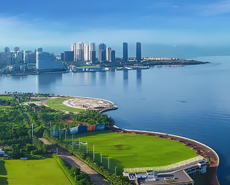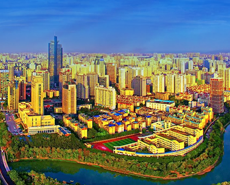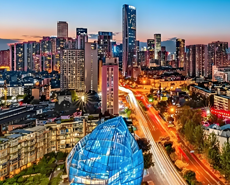
Antimony price to inch up in Q4
----Interview with Zhao Junhua
Vice President and General Manager
Guangxi Wanshizhi Rare and Precious Metals Technology Co., Ltd.
Vice President and General Manager
Guangxi Wanshizhi Rare and Precious Metals Technology Co., Ltd.
Established on January 17th, 2007, Guangxi Wanshizhi Rare and Precious Metals Technology Co., Ltd. is located in the Youjiang Smelting Plant, Napo town, Tianyang county, Guangxi province. The company mainly engages in the technical R&D and services of rare and precious metal materials, smelting, processing and sales of rare and precious metal and ores.
Asian Metal: Hello, Mr. Zhao, thank you for accepting our interview. Please introduce your company and main business briefly.
Mr. Zhao: Our company, Guangxi Wanshizhi Rare and Precious Metals Technology Co., Ltd.is located in Napo town, Tianyang county of Baise city, which was formerly established in 1986 with the name of Guangxi Tianyang Youjiang Smelter Co., Ltd. (renamed as Guangxi Tianyang Jinpeng Smelting Co., Ltd. later). In 2013, the company was totally held by Guangzhou Wanshizhi Investment Co., Ltd. and renamed as the current one from December 2018. The registered capital is RMB16 million (USD2.25 million) and the business scope covers technical research and service of rare metals; smelting, processing and sales of rare metals and minerals. After years of technical upgrade, the production facilities and technical level of our company are among the best in China's non-ferrous metal industry and the annual production capacity of antimony ingot reaches 5,000 tons.
We insist on technical innovation and have built good relationship with Central South University, Guangxi University and so on. Our company has dozens of technical patents and much experience in recycling of co-existence rare metals, being one of the companies which master the technology of Sb-Au-Ag comprehensive recycling.


Asian Metal: From early this year to late August, prices for antimony products decreased constantly. What are the reasons for the price decline in your opinion and how did your company cope with the situation?
Mr. Zhao: Firstly, lots of raw materials poured into Chinese market from Russia, Central Asia, Australia and Tibet, China; besides, the supply of polymetallic ore which contains antimony also increased in China. Secondly, the demand in China and abroad didn't increase, leading to oversupply. Thirdly, overcapacity in domestic antimony ingot market lasted for a long period and pervious inventory wasn't used up. Fourthly, Fanya's antimony ingot stocks were auctioned till late August. Fifthly, the global economy was sluggish and downstream companies generally cut production or even closed.
During the period, we took measures as follows: Firstly, we dampened smelting cost by technical reform to guarantee efficient production. Secondly, we kept trading without making speculation or reserves. The most important thing was that we made sales based on price trend prediction and ensured the supply for regular customers while looking for new customers.


Asian Metal: Compared with other antimony companies, what are the competitive advantages of your company? Would you launch any new project or technology next year?
Mr. Zhao: We mainly produce antimony ingot 99.90%min and 99.85%min. The "Ganzhuangshan" brand was well-recognized by new and regular customers with good quality. It was sold to Japan, South Korea, the US and European countries. We keep a good relationship with Central South University, Guangxi University and so on to gain technical innovation support on the research and recycling of Sb-Au-Ag, which would be our main business in the future.


Asian Metal: After Fanya's antimony ingot inventory was auctioned, prices of the material began to rise, how do you think about the change?
Mr. Zhao: Firstly, I think the price rise would be limited as there is still large inventory on the market. Secondly, the price rise was stimulated by the ease of market panic. Thirdly, antimony ingot prices were too low in the previous period; but the environmental protection was strict and the macro environment was unfavorable, so many mines were almost closed. Smelters scrambled for raw materials, resulting in a supply shortage, and antimony ingot prices increased accordingly. Fourthly, the market would see reasonable prices after a period of adjustment.














